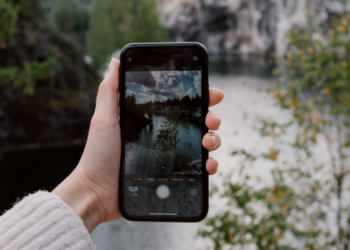Transferring writing to phones and web apps enables recording ideas anywhere while syncing across devices. However, standard cloud storage and note tools lack encryption, leaving data accessible across the vast hidden infrastructure. Servers get routinely breached, while recovery phone numbers linked to accounts risk unauthorized password resets.
Surveillance overreach also threatens rights. Governments compel tech and telecom companies to hand over consumer data without consent. Apps frequently mine user content for ad targeting. Digital thought cataloging is immensely convenient but profoundly insecure. Anonymous encrypted online notepads promise to secure personal notes behind uncrackable encryption only you control. However, protections vary drastically across commercial privacy services. Understanding encryption methods and provider incentives is crucial for true data confidentiality.
Levels of secure encrypted note-taking
What is a private note? Online services offer a spectrum of encryption standards determining access control and visibility:
- Closed source proprietary apps – Strictly avoid encryption quality untestable.
- Standard transport layer security (TLS) – Secures data transmission between devices and servers during sessions. Protects messages “in motion” only while stored notes remain accessible.
- Client-side encryption – Notes get encrypted device-side before syncing across the user’s signed-in devices through storage in the cloud. It provides access control and some content privacy.
- Zero access encryption – A gold standard where only the user holds decryption keys server-side. It makes server breaches fruitless since providers cannot access pooled encrypted content.
Mandatory data privacy and security law proposals would likely require standardizing on zero-access style models to guarantee air-tight, auditable protections controlled entirely by users.
How to secure encrypted note-taking services operate?
End-to-end encrypted services give users sole ownership over encryption keys needed to decrypt content. By design, companies cannot access pooled encrypted user data. Here’s how they work:
- The user downloads an app and creates an encrypted secure notebook.
- The app generates a public-private key pair and stores the private key only client-side.
- The user writes private notes locally device side.
- The app encrypts notes automatically using a public key before syncing.
- Encrypted notes get distributed through decentralized storage across servers.
- Notes remain unintelligible ciphers without the user’s private key to decrypt.
This zero-access encryption model is lauded for eliminating backdoors for providers, hackers, and governments into user data. Even company employees cannot access decrypted notes or encryption keys to recover accounts. Users have sole ownership over access permissions.
What about my password protecting encrypted notes?
You might wonder how encryption stops third parties from accessing private notes, but signing into an app with your username and password does not. It comes down to encryption key storage and authentication flows. With zero access encryption, login credentials only authenticate users locally on their own devices to unlock access to decryption keys stored there. Servers never see unencrypted keys nor hold enough data to retrieve them. Authentication only gates viewing privileges to private resources on authorized gadgets under user control. Saying your password doesn’t expose protected content remotely.
This contrasts websites where your login credential verifies your identity directly to a remote server to then serve private account resources it stores unencrypted tied to profiles in a database. Your password acts as the master key unlocking data stored encrypted only lightly or even plaintext externally. Hence, data compromises from remote infrastructure breaches. Local encryption key control is what makes end-to-end encrypted notes truly inaccessible to outsiders.

















